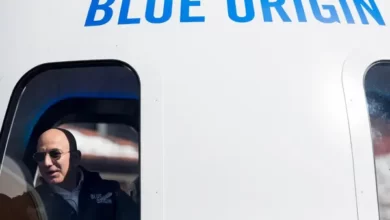Jeff Bezos’ impact on the gig economy: The rise of Amazon Flex and delivery services
The gig economy has grown rapidly in recent years, and Jeff Bezos’ Amazon has been at the forefront of this movement. Amazon’s foray into the gig economy has been through its delivery services, specifically Amazon Flex. This service allows individuals to work as independent contractors, delivering packages for Amazon. Jeff Bezos’ impact on the gig economy through Amazon Flex and delivery services has been significant, revolutionizing the way that goods are delivered to customers.
Amazon Flex: What is it?
Amazon Flex is a delivery service that allows individuals to work as independent contractors, delivering packages for Amazon. Drivers can use their own cars and set their own schedules, allowing for flexibility in their work. Amazon Flex is similar to other gig economy platforms such as Uber and Lyft, but with a focus on package delivery rather than passenger transportation.
Amazon Flex has been a significant driver of the gig economy, with thousands of individuals signing up to deliver packages for Amazon. The service has been particularly popular with those who are looking for flexibility in their work, as drivers can work as much or as little as they want.
Jeff Bezos’ Impact on Amazon Flex
Jeff Bezos’ impact on Amazon Flex has been significant, as the service was launched under his leadership. Amazon Flex was launched in 2015, and Bezos’ vision was to create a delivery service that would allow Amazon to compete with the likes of UPS and FedEx. Bezos’ vision for Amazon Flex was to create a service that was not only faster and more reliable than its competitors, but also more flexible.
Under Bezos’ leadership, Amazon Flex has grown rapidly. The service is now available in over 50 cities in the United States, and Amazon has plans to expand the service even further. The growth of Amazon Flex has been driven by Bezos’ focus on innovation and his willingness to experiment with new ideas.
Bezos’ impact on Amazon Flex has also been felt in the way that the service is structured. Amazon Flex drivers are independent contractors, which means that they are not employees of Amazon. This allows Amazon to avoid many of the costs associated with traditional employment, such as benefits and taxes.
This has also led to criticism of Amazon and Jeff Bezos. Critics argue that Amazon is exploiting its drivers by not providing them with the same benefits and protections as employees. There have also been concerns about the low pay that Amazon Flex drivers receive, with some drivers reporting earnings as low as $10 per hour.
The Rise of Delivery Services
Jeff Bezos’ impact on the gig economy has not been limited to Amazon Flex. Amazon has also been at the forefront of the rise of delivery services, with the company investing heavily in its own delivery network. This has allowed Amazon to control the entire delivery process, from the warehouse to the customer’s doorstep.
Amazon’s investment in its own delivery network has been driven by Bezos’ vision for the company. Bezos has always been focused on customer satisfaction, and he believes that controlling the entire delivery process is the best way to ensure that customers receive their packages quickly and reliably.
Amazon’s delivery network has also been a significant driver of job creation in the gig economy. The company has created thousands of jobs for delivery drivers, as well as for individuals who work in the warehouses and sorting centers that are part of Amazon’s delivery network.
Jeff Bezos’ impact on the gig economy through Amazon’s delivery network has not been without controversy, however. Critics argue that Amazon’s investment in its own delivery network has put traditional delivery companies, such as UPS and FedEx, at a disadvantage. There have also been concerns about the working conditions of Amazon’s delivery drivers, with some reports of drivers being overworked and underpaid.
The Future of the Gig Economy and Amazon Flex
The gig economy is here to stay, and Amazon Flex is likely to continue to be a significant part of it. As the gig economy grows and evolves, Amazon Flex is likely to face new challenges and opportunities.
One of the key challenges for Amazon Flex in the future is likely to be the regulation of gig economy platforms. There has been a growing push for greater regulation of gig economy platforms, with many arguing that workers need greater protections and benefits. If regulation is introduced, it could have a significant impact on Amazon Flex and other gig economy platforms.
Another challenge for Amazon Flex is likely to be the competition from other gig economy platforms. While Amazon Flex was one of the first delivery services in the gig economy, there are now a number of other platforms that are offering similar services. To stay ahead of the competition, Amazon will need to continue to innovate and adapt its services to meet the changing needs of its customers and drivers.
There are also opportunities for Amazon Flex in the future. The gig economy is growing rapidly, and there is likely to be increasing demand for flexible and reliable delivery services. Amazon has already shown that it is willing to experiment with new ideas and technologies, and this could allow the company to stay ahead of the competition and continue to grow its services.



